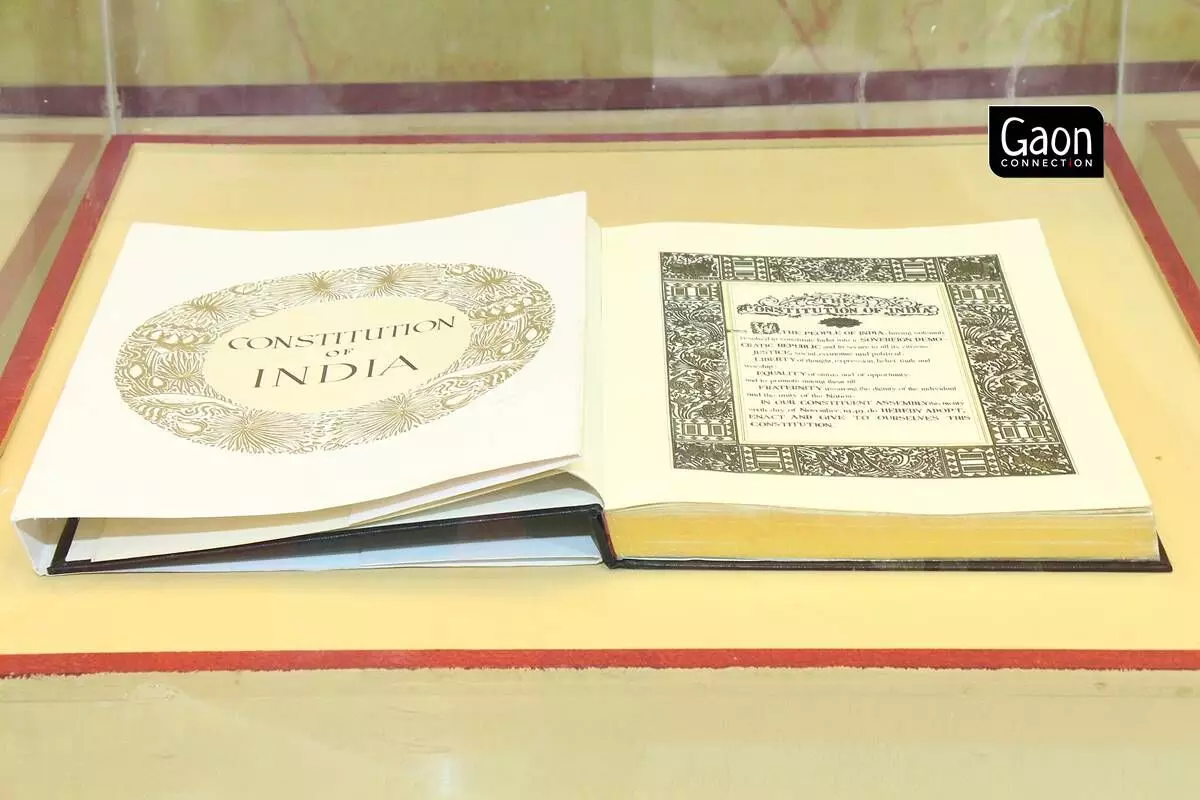Constitution Day: Here are Some Unique Features About the World’s Longest Constitution
Did you know that originally, the Indian Constitution was not printed or typeset. Rather, it was handwritten by a calligraphist. Also, it is the longest written Constitution in the world containing 395 Articles, 22 Parts and 12 Schedules. For more interesting facts about the Indian Constitution, read on.
 गाँव कनेक्शन 25 Nov 2023 4:34 PM GMT
गाँव कनेक्शन 25 Nov 2023 4:34 PM GMT

The original copies of the Constitution of India are kept in special cases in the Library of the Parliament of India. These copies are preserved in chambers filled with helium gas. Photo credit: Wikimedia Commons
Seventy four years ago, on November 26, the Constituent Assembly adopted the Constitution of India which formally came into effect on January 26, 1950. November 26 has been celebrated as the Constitution Day or the Samvidhan Diwas ever since the Union Ministry of Social Justice and Empowerment notified it in 2015 to promote constitutional values among citizens.
Originally, the Constitution of India was not typeset or printed but was handwritten with calligraphy in both English and Hindi — the two official languages of India.
The Constituent Assembly, which first met on December 9, 1946, took precisely two 2 years, 11 months and 18 days to come up with the final draft. Also, when the draft was prepared and put up for debate and discussion, over 2000 amendments were made before it was finalised.
Also Read: A teacher’s crusade to make sign language the 23rd official language of India
It was entirely handcrafted by the artists of Shantiniketan under the guidance of Acharya Nandalal Bose, with the calligraphy texts crafted by Prem Behari Narain Raizada in Delhi.
The original copies of the Constitution of India are kept in special cases in the Library of the Parliament of India. These copies are preserved in chambers filled with helium gas.
Officially, people of India are the ultimate custodians of the Constitution. It is in them that sovereignty of the nation vests and it is in their name that the Constitution was adopted as suggested by opening lines of the Preamble — ‘We, the people of India”.
The Constitution empowers the citizen, but the citizen too empowers the Constitution – by following it, by adhering to it, by protecting it, and by persevering to make it more meaningful with words and deeds.
Inspirations from USSR, UK, USA, France, Japan, Spain & Germany
The Indian Constitution has derived inspiration from several constitutions. The idea of fundamental duties has been borrowed from the Union of Soviet Socialist Republic (USSR) while the concept of suspension of fundamental rights during Emergency rule is inspired from Germany.
The format of division of the Constitution into Articles is taken from the British. Also, the ideals of liberty, equality, fraternity are taken from the French constitution. These words also appear in the Preamble to the Constitution of India.
The laws governing our Supreme Court and the concept of procedure established by law were adopted from the constitution of Japan. Similarly, the concept of Directive Principles of State Policy are taken from Ireland which itself borrowed these principles from Spain.
Lastly, the provision for judicial review of a new legislation and the format of the preamble have been inspired by the American constitution.
#ConstitutionDay
More Stories




